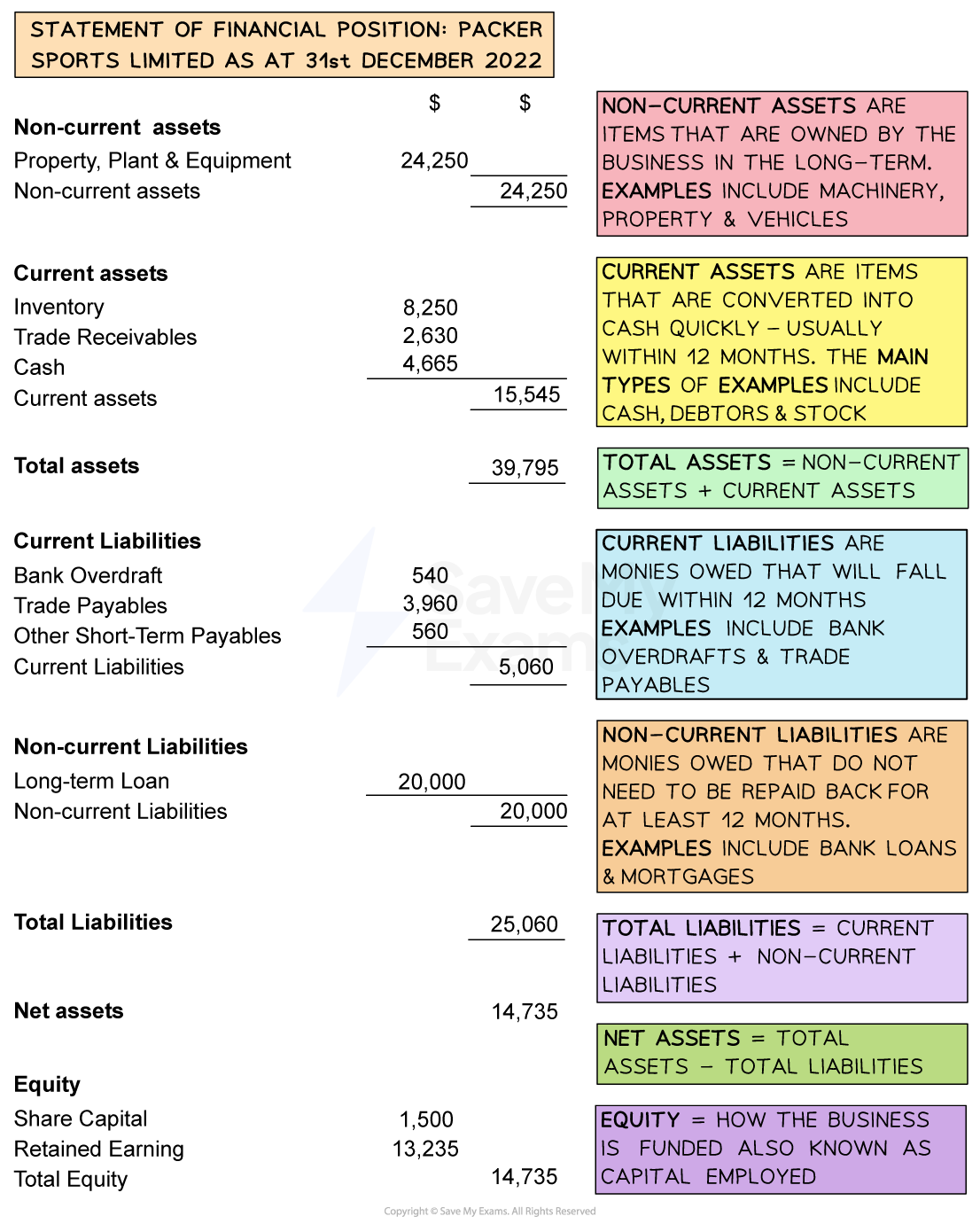The Statement of Financial Position (AQA GCSE Business): Revision Note
Exam code: 8132
Assets and liabilities
Assets
Assets are items that are owned by a business
Two types of assets appear in the statement of financial position
Non-Current Assets are items owned by the business in the long-term
Examples include tangible assets such as buildings, land, machinery and vehicles
Non-current assets may be intangible such as patents, goodwill or brand value
Current Assets include cash and items that can be turned into cash relatively quickly, usually within 12 months
The four types of current assets are cash in hand, cash in bank, trade receivables and inventory
Liabilities
Liabilities are items that are owed by a business
Two types of liabilities appear in the statement of financial position
Current Liabilities are short-term financial obligations that a business must usually pay within one year, or as demanded by its creditors
E.g. Trade payables and bank overdrafts
Non-current Liabilities are moneys owed by a business that are due to be repaid over a period longer than twelve months
E.g. Long term loans and mortgages
Structure of the statement of financial position
The Statement of Financial Position shows the financial structure of a business at a specific point in time
It is included as a key financial statement in the annual report
It identifies a businesses assets and liabilities and specifies the capital (equity) used to fund the business operations
The Statement of Financial Position is sometimes known as the Balance Sheet
It is called the balance sheet as the net assets are equal to the total equity
The statement of financial position generally follows the structure shown below
Statement of financial position

Interpreting the statement of financial position
Several deductions can be made from the statement about how a business finances its activities,
Financing its activities
Packer Sports Limited is funded through share capital of $1,500 and retained earnings of $13,235
The business has long-term liabilities in the form of a loan for $20,000
This is significantly greater than share capital so its gearing is high
Future applications for loans may be declined as the business is likely to be seen as a lending risk
What the business owns
On the stated date, Packer Sports Ltd owned assets worth $39,795 in total
Non-current assets of $24,250 consisting of property, machinery (plant) and other equipment
Current assets worth $15,545, comprised of inventory, trade receivables and cash
Inventory will be sold and converted to cash or trade receivables
When trade payables pay their invoices they will become cash
What the business owes
On the stated date, the business had total liabilities of $25,060
Its current liabilities were $5,060, comprised of a bank overdraft, trade payables and other short-term loans
Its long-term liabilities were valued at $20,000
Examiner Tips and Tricks
You are not required to construct a statement of financial position in the exam, but you may be asked to define assets and liabilities or identify the statement's uses and key components.

Unlock more, it's free!
Did this page help you?